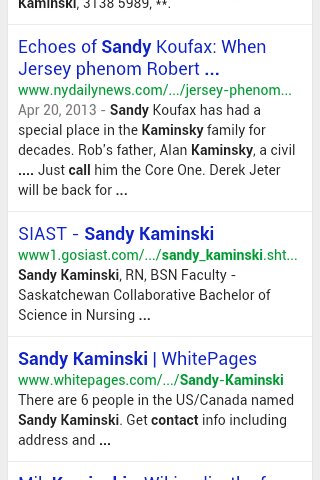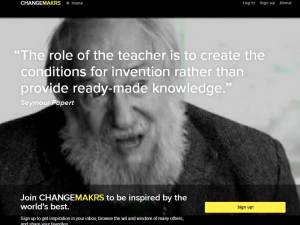Assignment 2 Summary of Learning in Prezi
Final Post
-
Final Post: How have I become a more networked professional?(focus on learning)
My focus on this class has been: “What spoke to me?”
I knew from class one that I would be coming across a lot of challenges. Right from “Declare Myself”, I knew that compared to you Alec and the majority of my peers, that would have to really open myself up to uncharted territory. Unlike my other masters courses, this course has such undefined boundaries, just like the internet. Well, I need boundaries! Well, I like to think I need boundaries. And then when I do, I want to break them down. Every concept can be looked at in such different ways and definitely has to do with the person’s experience with that concept of on-line learning and social media.
Some of this uncharted territory that I had to push myself to go into was my creating my twitter account. I have to admit I got more out of our google communities than Twitter. When I look at twitter, I have trouble deciphering what the information is. There are a lot of symbols that I just can’t connect with. I guess Twitter doesn’t really speak to me. (https://twitter.com/sandykaminski). I really enjoyed reading and responding to my peers on Google communities.
My Pinterest boards are Pharmacology Nursing and Technology. This account too seems to be a plether of images on a screen that I need to decipher through. (http://www.pinterest.com/sandykaminski/boards/).
Then when developing my blog on Google docs, I hit some road blocks that frustrated me to the point where I reached out to my friend, Shauna Davies, for her guidance on using WordPress since I noted that a lot of my peers where using it. In terms of my learning and advancing, I have always focused on relevant information and resources that have come my way in this course. I always tried to comment of other peoples blogs if I felt that that issue or concept spoke to me. I didn’t comment just for the sake of commenting. (https://sandykaminski.wordpress.com)
One of my goals was to transform my pharmacology course. I want to take the dry dry content and make this course dynamic, exciting, and one students look forward to. I though the use of social media and open education tactics would be a great way to reach out to my young students. Though the use of Moodle 2, that is forced upon me by the university, I tried to keep all the content and preparation material on the CNUR 202 Pharmacology website. This blog, on wordpress, is my final digital project which captures, I hope, the work I have done in transforming this class. I used the concepts learned in class from some of the guest speakers (see my prezi) such as story telling, to reach my students. I used PowerPoint and a prezi on the GI drugs and asked the students which one they preferred. I did a survey asking them which one they preferred. I also depended on the the old faithful PDF information. Oldies, but goodies. Finally, I attempted to blog with my fellow instructors in the course as a way to keep in contact with them before and after lavs were presented. That didn’t work so well. But that is ok. I see it instead, of me talking to myself weekly!
When I see what some of my peers have done with their blogging and such, I don’t think that I come close to their level of information learning and application. I did however, try to break out of my comfort zone and get myself “out there” while still respecting my own boundaries.
I lived this class how I live my life, if it speaks to me….I will listen.
Six Degrees of Separation
This concept blows my mind.
Six degrees of separation is the theory that everyone and everything is six or fewer steps away, by way of introduction, from any other person in the world, so that a chain of “a friend of a friend” statements can be made to connect any two people in a maximum of six steps. It was originally set out by Frigyes Karinthy and popularized by a play written by John Guare.
A Generation of Sissies
The “Generation of Sissies” was victimized by too-busy parents, who abdicated their responsibilities, and tried to pass them off onto schools and teachers. The teachers were not prepared to handle these new responsibilities. Add to this the expectations that have been created: “free meals” (government funded, means “free”) that go far beyond the old school lunches; “free transportation” (or being driven to school); “free extracurricular activities,” and much more. And for this, all they had to do was“show up.” Even grades are no longer a dose of reality. Kinder words replace letter grades, to soften the truth of impending mediocrity.
Worse yet, is the untimeliness of this “Generation of Sissies,” who think that there are no winners or losers. They learned this because everyone got rewarded just for participating. Trophies no longer represented hard work and winning to them. Success meant just being involved and “showing up”—and sometimes, not even that. News flash for Americans of this Generation of Sissies: In the cold, harsh world of 21st century global business there ARE winners and losers—and YOU are losing!
http://www.forbes.com/sites/prospernow/2012/05/10/a-generation-of-sissies/
Exceeding expectations of learners requires the following four variables – Gary Stager
1. Prompt, motivation, challenges or a thoughtful questions
2. Appropriate materials
3. Sufficient Time
4. Supportive culture, including a range of expertise
These four points, in particular, speak to me because consciously or not, I try to incorporate these points when teaching. I hope my students would agree that when lecturing and teaching in clinical, thoughtful, and prompt questioning are my style. Prompt meaning that the learning is happening right in front of us, whether it is a dressing change or assessing a patient, the teaching happens right there.
During my Pharmacology labs, I have tried desperately to simulate the hospital experience, so that practicing, that skill can be transferred to the hospital setting. The materials I use and request must, in my mind, be realistic to what the students will see in the hospital setting. You want to practice an injection, get me syringes, needles, and an inject-a-pad that I can strap to my arm. Now let’s practice administering that medication through that needle and I will role play how a patient may react to a needle coming at them!
Sufficient time to teach is often out of my hands. But I do try to structure my teaching around the time I am given even if it means modifying and removing some material.
Learning in a supportive culture is so important for nursing students in and out of the hospital setting. No one want a Nervous Nelly coming at them to practice a skill. The patients appreciate it too.
Digital Citizenship
“how should we act when we are online, and what should be taught to the next generation”
http://digitalcitizenship.net/Nine_Elements.html
Shock site
Bang with Friends – Facebook
Copyright and copytheft

Cardiovascular Drugs Jeopardy Game for Pharmacology Students
CV_jeopardy_2012
Me on google
http://google.ca/sandykaminski
Posted from WordPress from Sandy’s Android. I expected to see myself in other places than this one.
Sylvia Martinez
@ smartinez Sylvia Martinez
http://smartblogs.com/education/2013/08/20/why-the-maker-movement-matters/
You are the teacher and you are expected to get the students to do the same thing. How can we as teachers do this? The learners are all different. Their learning styles are different. Yet, the content needs to be learned. This is an amazing and inspiring quote that makes me want to be a better teacher. This quote reminds me of my goal for this class – transforming my Pharmacology course. #eci831

